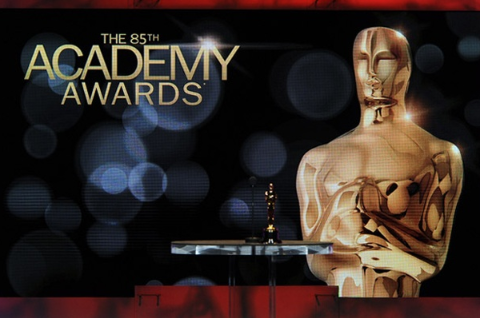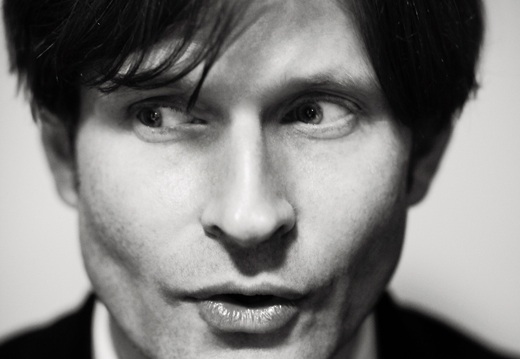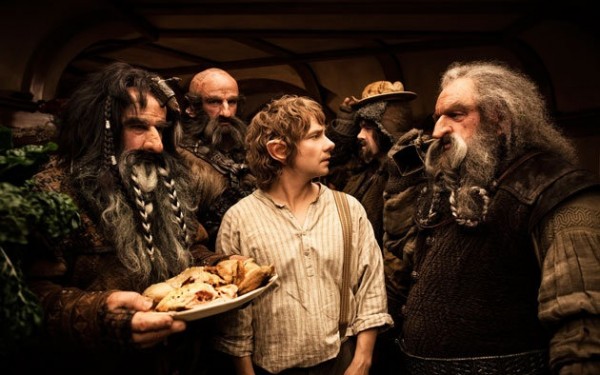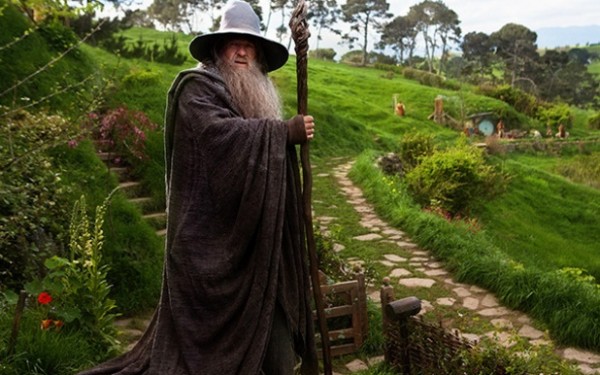Our Town’s Top Music Mavens Take On The Year In Sounds
■ Jim Manion‘s Best Albums of the Year
As Music Director of WFHB, I listen to music pretty much all day, every day. My favorites of 2012 had to be records I listened to many times over by choice and will continue to listen to for the rest of my years.
◗ KID KOALA “12 BIT BLUES”
New music created with roots music samples can be brilliant, or it can be stinky cheese. Kid Koala scores brilliance with this electronic tribute to the blues. The Kid’s secret: hitting the dusty blues samples in real-time (on a vintage E-mu sampler) to capture that elusive blues feel. After my first listen (in a rental car), I listened another five times in a row.
◗ NEIL YOUNG & CRAZY HORSE “PSYCHEDELIC PILL”
Uncle Neil got mixed reviews for this epic, sprawling journey into the Crazy Horse zone. To my ears, this is as fresh as 1970’s Everybody Knows This is Nowhere but ten times as exploratory in the sonic realm. Neil and The Horse are definitely driftin’ back and waving their freak flag. In the process they create spaces of aural imagination that are truly psychedelic.

Psychedelic Pill
■
◗ GALACTIC “CARNIVALE ELECTRICOS”
Mardi Gras Indians + Stanton Moore + edgy funk electronics + New Orleans music samples = one wildass Mardi Gras album for the ages. My neighbors will hear this a lot again in January and February. Hey Na Na!
◗ SHANNON HAYDEN “SOLID STATE CELLO”
Still in her early 20s, this classical cello/guitar virtuoso composes and performs a visionary fusion of classical and electronic that is stunning and mind-expanding. Shannon records off-the-grid with wind and solar power at her family’s organic farm in central Illinois. If you get a chance to see her live, go!
◗ LERA LYNN “HAVE YOU MET LERA LYNN?”
Southern belle Lera Lynn sings with a big, clear, timeless voice that evokes shivers when it rings. Her lyrics are full of spooky Southern Goth, while her song forms open up to release the tense but resigned anxiety those lines create. A modern day Bobbie (Ode to Billy Joe) Gentry, Lera’s music is heavy-duty whether she plays solo or with her scorching electric band.
■
R&B Mojo and Rasp-Rap Rushes ■ Jason Fickel‘s Best Albums of the Year
◗ FIONA APPLE “THE IDLER WHEEL…”
Raw, dark songs with some R&B mojo. Catchy, but it shouldn’t be.
◗ RAY ANDERSON POCKET BRASS BAND “SWEET CHICAGO SUITE”
A blast of horn and percussion exuberance with pieces that begin vaguely familiar, but end up someplace you never expect.
◗ GOTYE “SOMEBODY THAT I USED TO KNOW”
This monster truck of Aussie pop instantly invited covers and parodies (is there a difference?); there was no way to separate it from the year 2012.
◗ DRAKE “TAKE CARE”
When Bobby “Blue” Bland’s words come out of Rihanna’s mouth and Gil-Scott Heron’s rasp-rap rushes out of pop radio all in one jam, you know something has happened.
BOB DYLAN “TEMPEST”
Another awesome collection that yet again brings it all back home and then hurls it right back out. The title cut is a 13-plus minute titanic ballad, because, really, why not?
■
■ Abe Morris‘s Best Albums of the Year
◗ MADONNA & BLUNDERBUSS “MDNA”
Madge has been much maligned in the press this year, still this is my pop record of the year. Madonna seethes in post-divorce purgatory, but she ain’t sittin’ still. Girl can still get her groove on putting together her best record this millennium by far.
◗ BEAR IN HEAVEN “I LOVE YOU, IT’S COOL”
I actually heard this for the first time last year while I was in New York, so I bring a bias of this album being my soundtrack for that trip. But 13 months later, I don’t think there’s any album I’ve listened to more. The acid-trip version of Pretty Woman featured in the video for “Sinful Nature” is an added bonus.
◗ MATTHEW DEAR “BEAMS”
Matthew Dear sounds like he records himself singing backwards and then grabs the final audio track by playing back the record at half speed. This voice set a top an utterly lush and gorgeous bed of beats makes for an album that keeps pulling your ear back into the mix.
◗ FRANK OCEAN “CHANNEL ORANGE”
Toeing the line between rap and R&B, Frank Ocean’s Channel Orange is the most complete record of the year. Often times hip hop albums tend to load the back end with lots of filler, but not this one. The surprising observational and confessional tones of this record make it a stand out in a hip hop world often over-saturated with braggadocio.
◗ JACK WHITE “BLUNDERBUSS”
The mad music wizard from Nashville is probably the best in the biz at finding new and inventive ways of delivering music and keeping fans on their toes. And it goes without saying that Mr. White and his perennially be-suited entourage is one of the most stylish men in America. But on Blunderbuss, Jack White shows us just how cool he is, bringing 13 songs relatively simple in form, and slathering them in layers of swagger. No other person on the planet can make these songs shine like Jack does.
Honorable Mentions:
◗ Tindersticks “The Something Rain”
◗ Grizzly Bear “Shields”
◗ Here We Go Magic “A Different Ship”
◗ Tame Impala “Lonerism”
◗ Die Antwoord “Ten$ion”
■
Chris Swanson‘s Best Albums of the Year
◗ Father John Misty “Fear Fun”
Finally a new chapter in the great American bathrobed SoCal beautiful loser songbook, and it’s a great one.
◗ Grimes “Vision”
Along with Frank Ocean, Claire Boucher’s Grimes is one of 2012’s great emergent musical personas. A truly gifted songwriter/producer/performer.
◗ Killer Mike “R.A.P. Music”
The best hip hop record of 2012. It is wizened (but not jaded) and has the most politically urgent song of the year in “Reagan”.
◗ Merchandise “Children of Desire”
This is what happens when three hard core kids from Tampa let their guard down and let their Anglophilia take hold.
◗ Tomas Barfod “Salton Sea”
The debut solo album by this Danish producer mixes vocal-driven hook-heavy pop songs with gorgeous Kraut-inspired instrumentals.
■
Best in Blues ■ by Cathi Norton
◗ PHANTOM BLUES BAND “INSIDE OUT”
Taj Mahal’s road band, heavy-weight musicians bristling with chops. This CD features horn backup, lots of keyboard/organ, soulful vocals and urban blues/rock—loaded with style and maturity.
◗ MANNISH BOYS “DOUBLE DYNAMIT”
Fourteen great players from Delta Groove stable of musicians with a double disk release of blues that is solidly based on the roots of the masters while building new branches on that tree. GREAT players like Jimi Bott, Frank Goldwasser and Kirk Fletcher, along with fine vocalists like Sugar Ray Rayford and Finis Tasby.
◗ NATHAN JAMES & THE RHYTHM SCRATCHERS “WHAT YOU MAKE OF IT”
Authentic blues dawg, James built a guitar in high school, played on the road as a one-man band in the blues for 15 years and here puts together a trio to round out his rollin’ blues—live in one take. Solid playing, original attack. Smokin’.
◗ SMOKIN’ JOE KUBEK & BNOIS KING “UNPLUGGED—CLOSE TO THE BONE”
Ex-Freddie King guitarist Joe Kubek and Louisiana guitarist Bnois King have had a hard-rockin’ blues career for 20 years. Here they take a wicked left turn and put out an acoustic disc, featuring fine, fine blues players from the West Coast. Great players, and without the loudness as distraction, it’s clear these are fine blues artists.
◗ EDDIE TAYLOR JR. “SO CALLED FRIEND”
Son of famed guitarist Eddie Taylor, Sr., Junior has picked up his traditional blues guitar style and unlike Eddie senior, sings most tunes. His guitar work (like Eddie Sr.’s) features a beautiful old traditional blues attack. Saweeeet guitar work.
■
Best in Electronic ■ by Markus Lowe
◗ BASSNECTAR “VAVA VOOM”
Electronic pioneer of self-described “bass music” culture returns with more brilliant bass anthems sure to keep your head rumbling and your body moving.
◗ HOT CHIP “IN OUR HEADS”
Indie-dance favorites dive deep into love, taking the quirky, idiosyncratic experimentations of their early career and distilling it into groovy, heartfelt dance songs.
◗ KID KOALA “12 BIT BLUES”
After 3 days with an E-mu SP-1200 sampler, Koala takes the blues on a journey back to hiphop’s electronic sampling roots to produce a really raw, immediate and strangely beautiful album.
◗ SHAWN LEE “SYNTHESIZERS IN SPACE”
The one-man music machine slings psyched funk-soul from the far side of the moon; 1970 has arrived at 2001.
◗ BOYS NOIZE “OUT OF THE BLACK”
Berlin-based Alex Ridha delivers his requisite style of in-your-face electro-bang with choice elements of early influences of old school house tracks, B-Boy cuts, and acid records.
■
Best in World Music ■ by Michael McDowell
◗ VARIOUS ARTISTS “THE COLOMBIAN MELTING POT: DIABLOS DEL RITMO 1960-1985”
This two-disc compilation is the result of a five-years hunt in Barranquilla, a sprawling city in the middle of the Colombian Caribbean Coast, one of the planet’s musical hotspots. It’s irresistible, incredible, and immoral, even, to have music this good.
◗ JIMMY CLIFF “REBIRTH”
He’s still got it! Cliff is the rare talent whose voice ages beautiful. This one goes back to his roots a la The Harder They Come, but exudes the fresh energy of real rejuvenation and rebirth.
◗ VARIOUS ARTISTS “FUTURE SOUNDS OF BUENOS AIRES”
Traditional Andean cumbia and folklorico roots + electronic soundscapes and street beats = cumbia digital. The best of the best from the contemporary dance scene in Buenos Aires, perfect for the next time you turn your residence into a nightclub.
◗ NIYAZ “SUMUD”
Seamless fusion of ancient Persian poetry, traditional folk from Iran, and sumptuous electronic grooves; Niyaz delivers thick music.
◗ SIERRA LEONE’S REFUGEE ALL STARS “RADIO SALONE”
Remember Lotus Festival 2010? Lanky and magnificent West African roots reggae as per usual, here the All Stars take on Congolese soukous as well, and there is no doubt they are some of the best afropop players on the planet.
■
Best in metal ■ by David J. Smith
◗ DRAGGED INTO SUNLIGHT “WIDOWMAKER”
Reverb-drenched guitars, violins, and disturbing spoken-word samples lead the listener on a beautiful, exhilarating journey into darkness.
◗ GAZA “NO ABSOLUTES IN HUMAN SUFFERING”
Controversial political and religious views aside, Gaza plays a brutal, supremely creative, and thoroughly enjoyable brand of blackened crust.
◗ EAGLE TWIN “THE FEATHER TIPPED THE SERPENT’S SCALE”
This Utah band’s perfectly-produced sophomore release is a ferocious, complex, and sublime amalgam of doom and drone.
◗ DEATHSPELL OMEGA “DROUGHT”
Another avant-garde black metal masterpiece of meticulous chaos.
◗ KRALLICE “YEARS PAST MATTER”
Harsh, dense, and precise melodic black metal mark this band’s finest release.
■
Best Traditional Roots, Bluegrass & Celtic ■ by Jamie Gans
◗ TIM O’BRIEN & DARRELL SCOTT “LIVE”
Originally recorded live in 2005 and 2006 at The Grey Eagle in Asheville, NC but only now released in 2012, multi-instrumentalist and singer, Tim O’Brien with singer-songwriter, Darrell Scott harmonize in power and passion a full palette of inspired songs.
◗ THE KATHY KALLICK BAND “TIME”
Kathy is in great company blending heartfelt vocals and dazzling musicianship with her band mates as she treats us to one of the sweetest albums in her 40 year musical career.
◗ THE OUTSIDE TRACK “FLASH COMPANY”
From Ireland, Scotland, the US, and Canada The Outside Track provides traditional lush vocals and driving Celtic tunes with rich complex arrangements on fiddle, harp, accordion, flute, and guitar.
◗ THE HILLBENDERS “CAN YOU HEAR ME?”
They are part of a new generation in a stylistic break from the traditional and commercial bluegrass world along with groups like The Infamous Stringdusters and Town Mountain. The Hillbenders have their own stamp of originality and instrumental virtuosity. Great pickers, great singers performing all their own material.
◗ BREABACH “BANN”
Bann simply means band in Scots Gaelic. Breabach hails from the Highlands and they weave together an amazing tweed of pipe tunes, fiddle tunes and Gaelic songs with youthful finesse and fury that is finer than the best of an aged single malt.
■
The Ryder, January 2013














